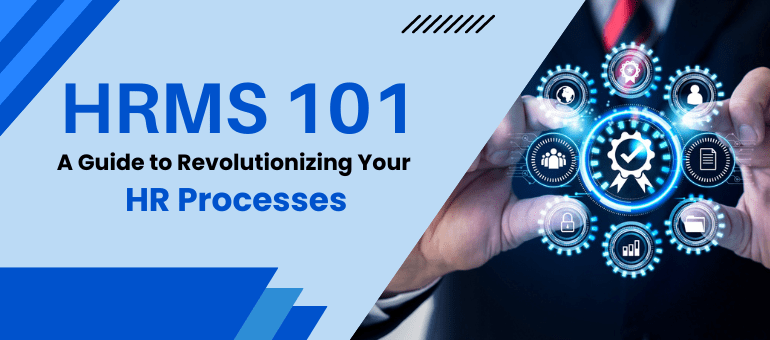In an era where thought leadership drives innovation, leaders bring people together to accomplish a common goal. Here, having a vision matters, and you can achieve your organizational goals only if you are clear about your objectives and key results.
Yes, we are talking about using measurable OKRs to get things done efficiently. As Peter Drucker rightly said, what gets measured, gets managed. It is the same as relying on the efficiency of an HRMS to get things done on time.
What are OKRs?Objectives and Key Results (OKRs) is a goal-setting framework used by organizations, teams, and individuals to define clear objectives and track achievable outcomes. It is used to measure goals and how far one has been successful in accomplishing them.
Andy Grove of Intel coined the term OKRs in the 1970s and was initially called iMBOs, Intel Management by Objectives. This framework was later taught to John Doerr of Intel by Andy Grove, who helped formalize the term OKRs. Now, industry leaders have embraced this concept and are benefiting from it. Let’s dig deeper for clarity.
Objective(s): An objective can be defined as precise actions that an individual or an organization takes to accomplish measurable goals. It is a precise statement defining clear goals and how to move towards them effectively. An objective is time-bound and helps people take action.
Key Result(s): Key results are quantitative. It measures the success rate or achievement of a defined objective. For example, if you have outlined five objectives for an online course, the key results will determine if you’ve been successful in measuring those objectives in a given timeframe.
How to write objectives?Objectives help you get things done. Whatever it is you’re trying to achieve, adding objectives to your goal surely helps. However, people often tend to confuse while writing measurable objectives. Objectives precede accomplishment. As you use HR management software to make informed decisions based on the defined criteria, you can use this framework to assess risks and decide better.
While writing objectives, you should know that they should be actionable, identifiable, and time-bound. Do not have more than three objectives per team.
For example, an online course on soft skills aims to make teams coordinate better and reduce the chances of conflicts. Here, you can define objectives like:
- Identify five types of communication barriers
- Define types of communication methods
- List the 7 C’s of communication
If you read these objectives, they are measurable. One need not realize what’s critical thinking in this aspect and how one can measure it. You can’t measure critical thinking when making decisions. You can involve or utilize your critical thinking skills to get things done.
How to write key results?You can write key results by attaching a numerical value for the metrics. Since key results depend on the objectives you have created, the success rate largely depends if you can identify or measure. Did I accomplish this by doing this? Keep key results to five.
For example, an HR may ask If I can make payroll processing easy using new payroll software? How do you measure its effectiveness? You can say if it’s accurate in finding discrepancies and managing the salaries of hundreds of employees. The crux is to know if I can track or measure progress.
Why should I use OKRs? How does it benefit me?A goal-based setting yields benefits and results. You can rely on your OKRs to provide you with the clarity you need to take further actions. The industry juggernauts like Google, Adobe, and Netflix have successfully implemented OKRs to achieve their time-bound goals. Using OKRs effectively can help you state the clear mission and vision of your organization.
Help you focus on your goalsWriting measurable OKRs helps you focus on your short-term and long-term goals. How? Your efforts are limited to achieving 3-5 objectives and key results, which means you are not distracted by outside attention. Your sole focus is on knowing your priorities, how to get things done, and proficient ways to do the work. It brings clarity to the frame, and you don’t waste time in identifying more objectives. Remember, you can set 3-5 objectives to achieve the desired result.
Help you track progressA clear objective helps you track progress without wasting time. You don’t have to track or measure objectives now and then. You can set up a weekly reminder to assess if you’re heading in the right direction.
By doing this, you can also make out if you’re able to meet the criteria to accomplish your short-term or long-term goals. Where are you lacking, and what measures are you taking to reach the end goal? When you can put metrics to track these things, you can breathe for a while.
Help you reassess your goalsTaking a cue from the previous point, you can go back to your objectives and reassess if they are helping you identify a path to accomplishing key results. Have you been faulty somewhere? Is the objective not measurable anymore? When you can answer these questions, you will find clarity in things, and you can halt in the middle to make things progress forward.
Help you stay committedA leader is committed to achieving goals, come what may. With the use of the OKRs framework, one cannot rest until key results are achieved. Why? You have allotted resources, planned budgets, and set a deadline for the tasks.
Commitment is the key to achieving results. When you have got this much on your plate, say you’re aiming to achieve desired numbers in sales, you will agree that measurable OKRs make things easy. They do.
Setting realistic expectationsNow that we have talked about OKRs in detail, one takeaway for everyone is to have a realistic approach towards people and processes. One cannot assume things and make decisions based on those assumptions. It may lead to a risky path where nothing is pre-defined, and you go with the flow. That’s why you need to measure goals and objectives.
Since the OKRs framework is used to set realistic objectives, you can consider using this framework to make big, bold decisions concerning employee welfare and customer satisfaction. When your objectives and key results are aligned well, it’s a win-win situation for the team or organization. You can focus on other areas counting on the efficient tracking of the framework.
Leaders have often talked about envisioning a better tomorrow for their people and organizations. Whether it’s about using customized HR software to meet employees’ needs or introducing customer-centric programs to bring in new clients, they like to lead by example, and rightly so. Their approach to things is systematic and organized, and OKRs are organized strategically to meet business needs.



